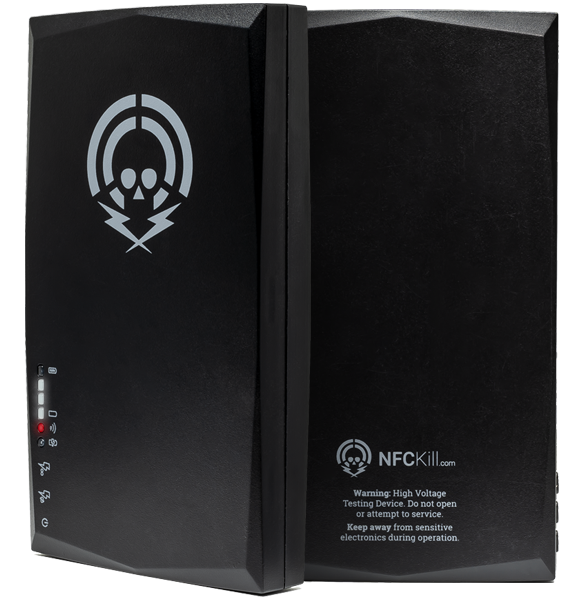The world's only RFID tag deactivation tool
The NFCKill is tuned to instantly deactivate Low and High Frequency RFID tags: 125KHz - 13.56MHz. Likewise, it is able to inductively couple with most devices that contain an form of coil.
The NFCKill Devices only work with Low & High Frequency RFID Tags. If you need to disable UHF Tags, please use the UHFKill device.
The NFCKill is not designed for animal tags / injected tags. Due to the size of the chips, results are not guaranteed.
Targeted Frequencies:
- High Frequency (13.56MHz)
- Tags: All known tags (MIFARE Family, HID iCLASS, Calypso, Contactless Payment, etc)
- Hardware: Most reader and writer hardware, NFC-equipped phones, Contactless Payment Terminals, etc
- Effective Range: 0 - 6cm
- Throughput: 50 cards per cycle (max 6000 per minute)
- Low Frequency (125 - 134KHz)
- Tags: All known tags (HID, Indala, etc)
- Hardware: Most reader and writer hardware
- Effective Range: 0 - 5cm
- Throughput: 1 card per cycle (max 120 per minute)
- Ultra High Frequency (850 - 930 MHz)
- UHF technology is fundamentally different, and requires a different device. Please refer to the UHFKill Device.
Other Technologies
- Wireless charging (chargers and devices)
- POS systems
- Induction-Loop equipped systems
- Systems with coils that can have current induced
Technical Specifications
The NFCKill has the following technical specifications:
Frequencies
- Tuned Frequencies: 125KHz - 13.56MHz
Hardware
- Battery: Rechargeable Li-ion, 3.3V
- Input Frequency: 3.3V
- Output Voltage: ~1600V
Operating Modes
- Single Pulse (Standard & Professional Version)
- Continuous (2 Hz / 0.5s) (Professional Version only)
Miscellaneous:
- Battery Life: ~10,000 discharge cycles
- Charge Interface: Micro-USB
- Case: ABS
- LEDs: 4x Battery Level indication, 1x Power, 1x Operation Indication
Operational Warning
The NFCKill is a high-voltage device, containing several shock-hazards. It must be kept and operated in a controlled environment, by a trained and responsible technician. Unintentional damage may occur to due irresponsible operator error.
NFCKill.com declines any responsibility from the use of the device. For more information, please review our terms and conditions.
NFCKill Product Presentation Videos
Extended Testing (Hardware Fuzzing + Failure Mode Audits)
Operating Instructions / User Manual
On the device there are three buttons. Power, Single Pulse, Continuous Pulse (Pro version only).
A short press on the power button will display the battery level of the device (One - Four LEDs will light up, indicating the battery level)
A long press on the power button will turn the device on - there will be one LED that is now constantly lit.
An additional long press on the power button will turn the device off.
When the device is powered on, you can action the Single Pulse or Continuous Pulse (Pro version only) buttons.
The Single Pulse will trigger a single pulse. When the pulse is sent, a LED will display.
For Pro version, the Continuous Pulse button will trigger continuous pulses. For each pulse, a LED will display.
To stop the Continuous Pulse cycle, press the Continuous Pulse button one more time.
On the case there is the logo - this is the center of the pulse zone. When you are disabling tags, please place the target tag in this zone.
NFCKill Standard Version Product Tutorial
NFCKill Professional Version Product Tutorial
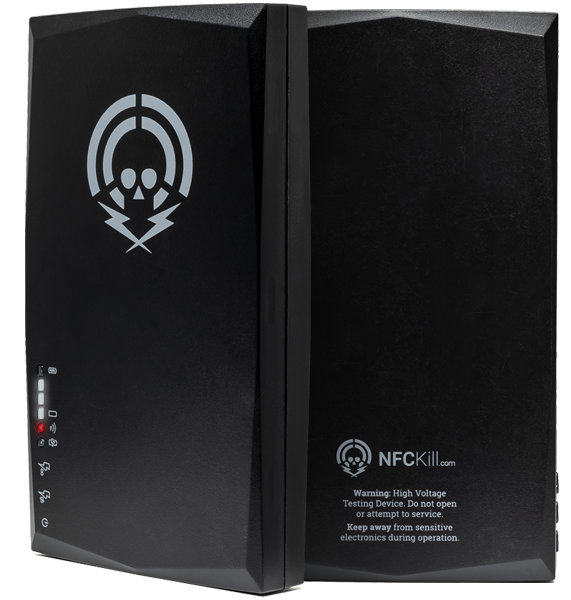
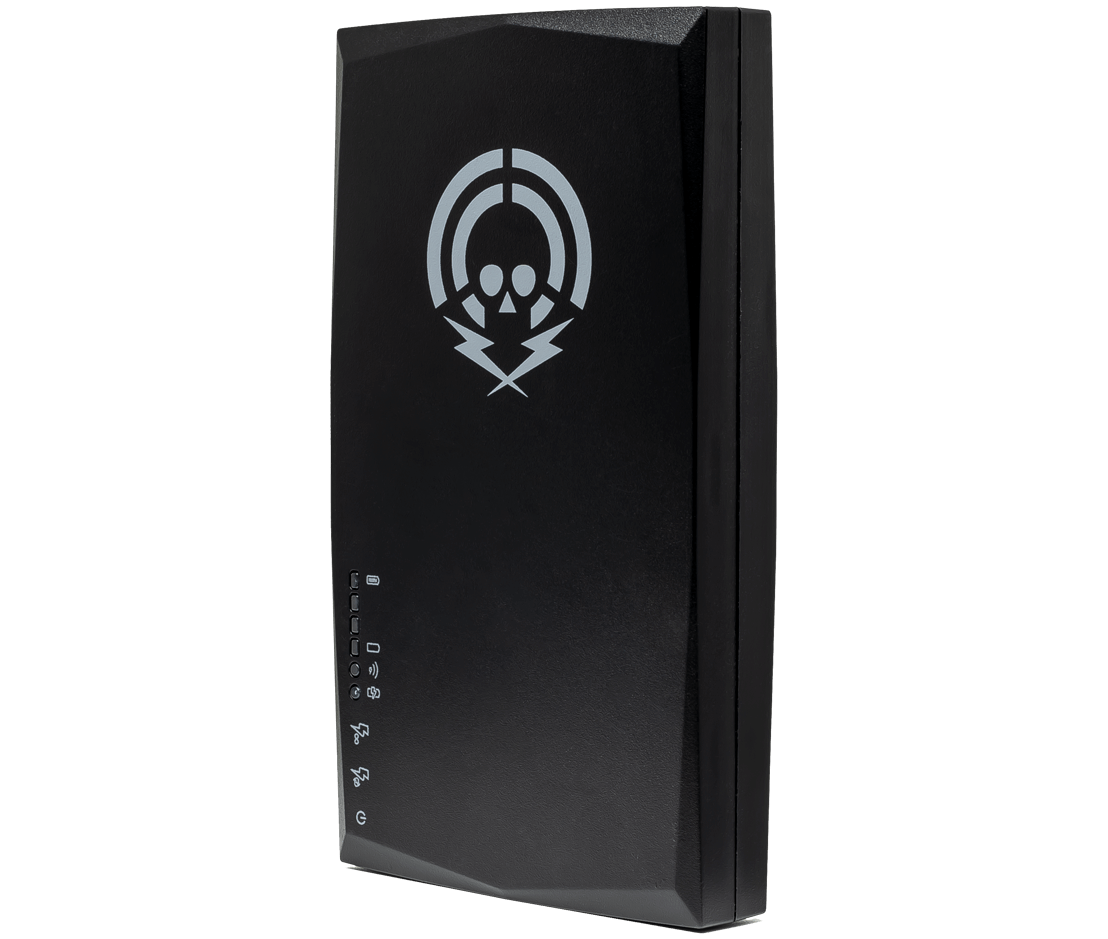
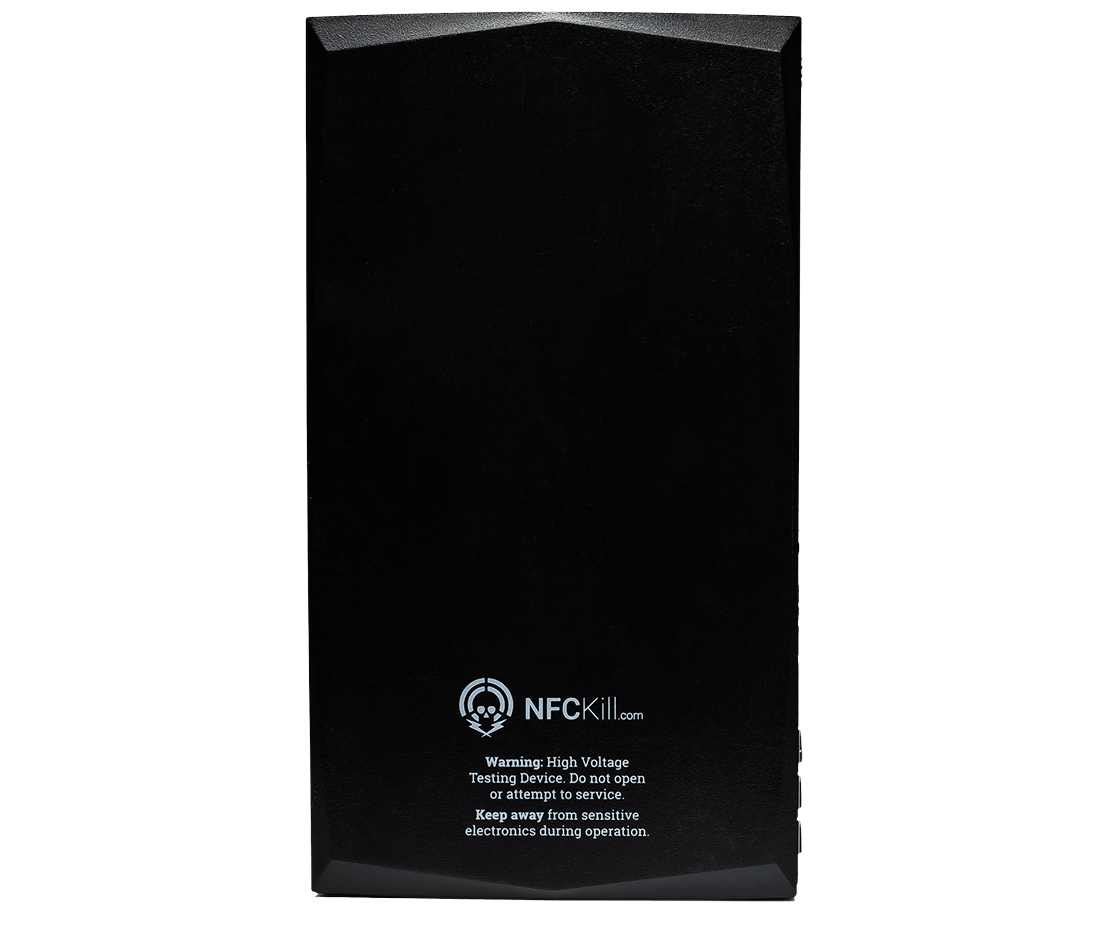
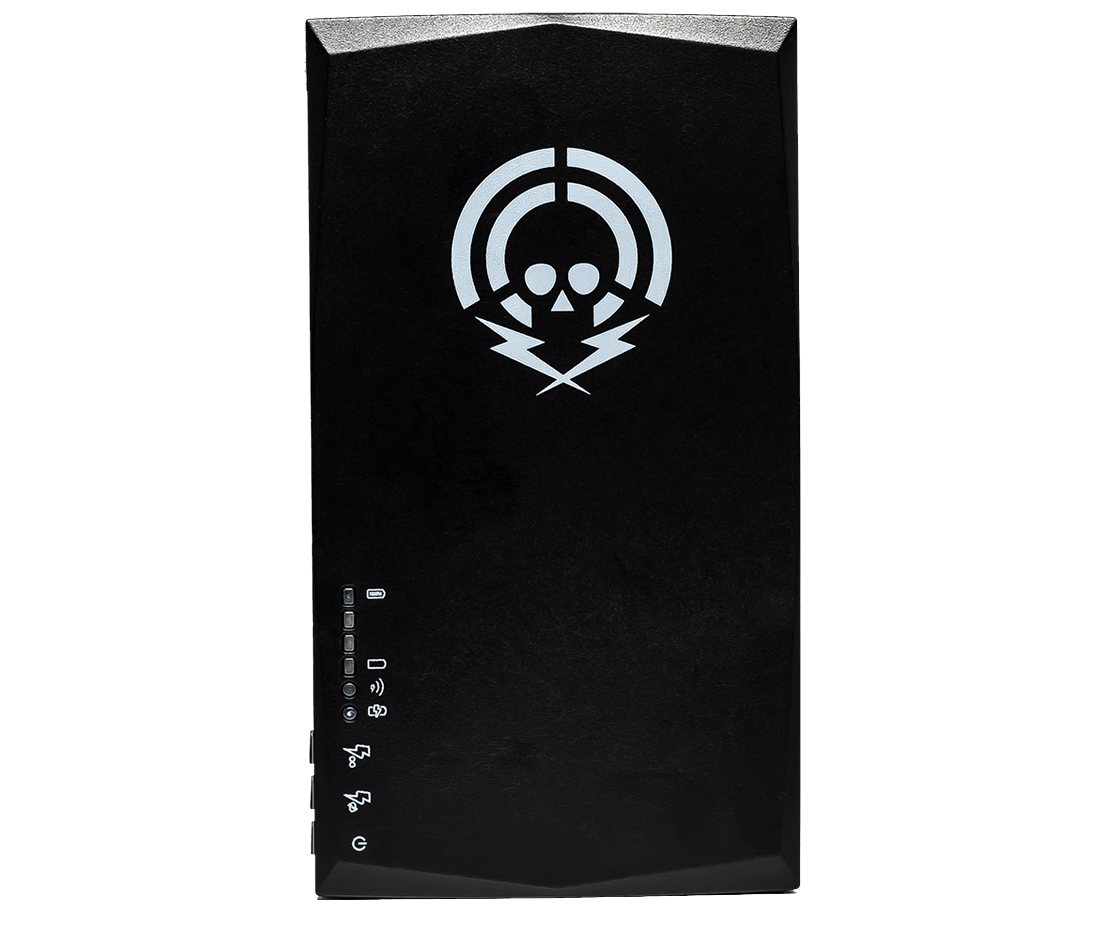
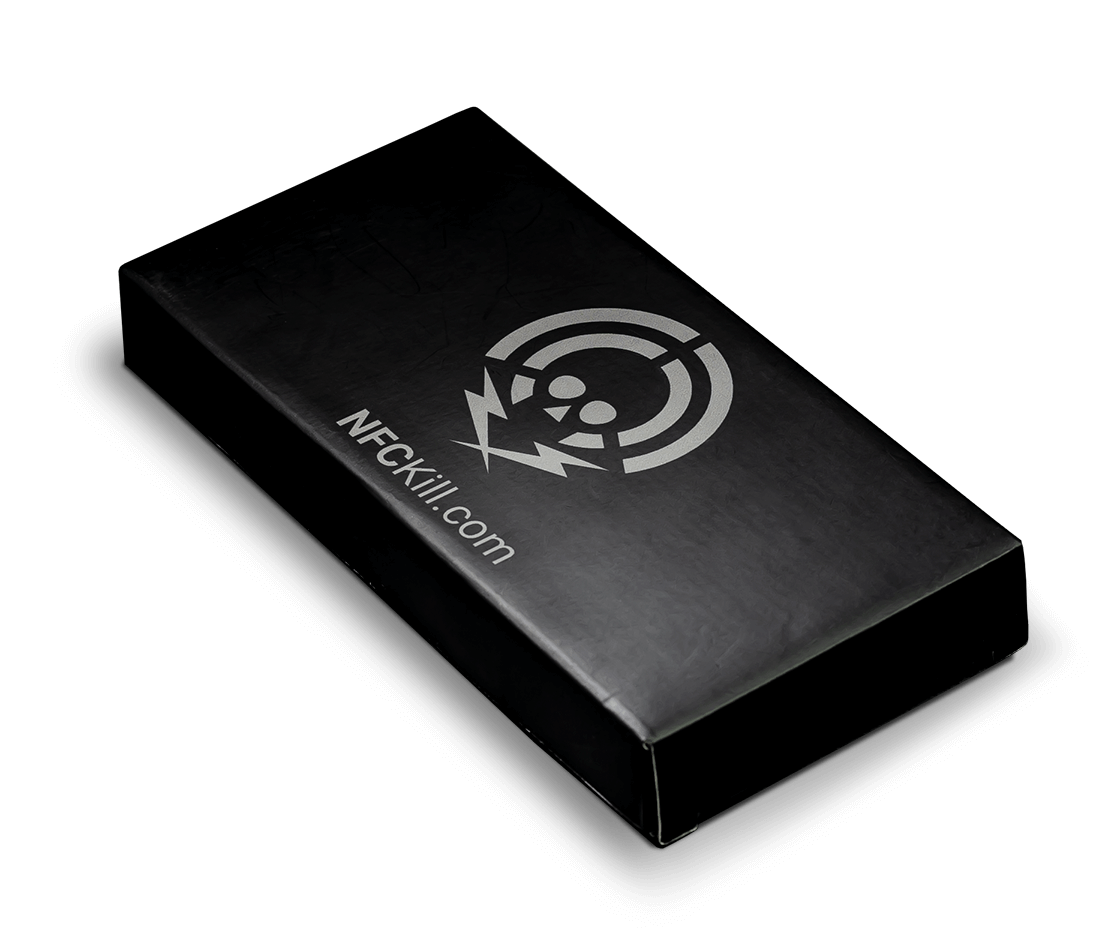
Which device do I need ?
To determine which device you need, you need to determine if the tags are UHF tags or HF/LF tags.
Please refer to the table below in order to determine which type of tag you are dealing with, and which device you need to use.
-
UHF (Gen1, Gen2)
Easily identifiable by their "wing" style antennas with the RFID Chip in the middle, these RFID tags are UHF and can be deactivated with a UHFKill device.
-
Embedded UHF
Ranging from 3 - 10mm, typically embedded in products such as eyeware, these tags are UHF and can be deactivated with the UHFKill Embedded device.
-
High Frequency
Also called "NFC" tags and typically used in access control, transport, payment systems and identification documents, HF (13.56MHz) tags can be disabled with the NFCKill device.
-
Low Frequency
Low Frequency (125 - 134KHz) tags are an older technology, still widely used for access control, pet-identification, etc. These tags can be disabled with the NFCKill device.
UHF Tag Overview
UHF Tags are very commonly embedded in consumer products. Because of
UHF tags' longer read-range, tags are often used during manufacturing
for logistics and quality control. However, UHF tags are often used for
other less ethical reasons:
- Brand Control:
Large brands often embed UHF tags in clothing / shoes / apparel allow
brands to track individual items and force distribution to their
approved channels only.
While there are legitimate uses, specifically to prevent counterfeits or retail theft, many brands use RFID / UHF as a form of brand control.
Companies
specialised in clothing resale or modification (ie customised sneakers)
are often subject to legal threats via the brand, who track down makers
via the RFID tags embedded in the items - even though their work is
protected via the first-sale doctrines. - Consumer Tracking: Because UHF tags have a unique signature and cannot be easily removed from clothing / shoes / etc, they are used to track / spy on customers.
This can be in the form of data collection in retail environments (following consumer behaviour in shopping malls, tracking a customer's path, habits, etc)

